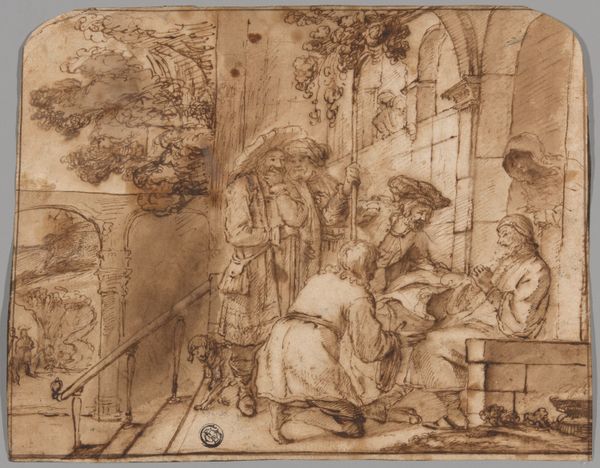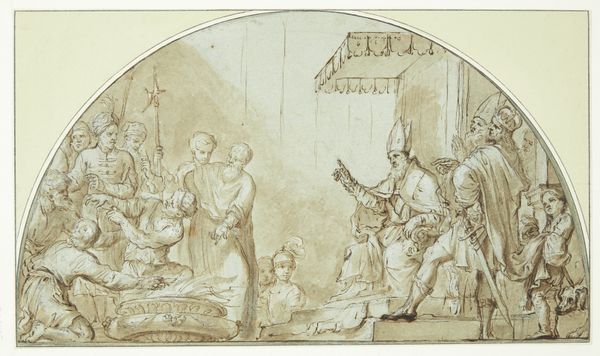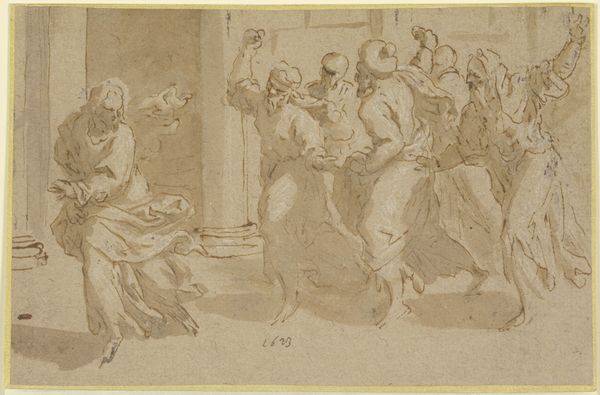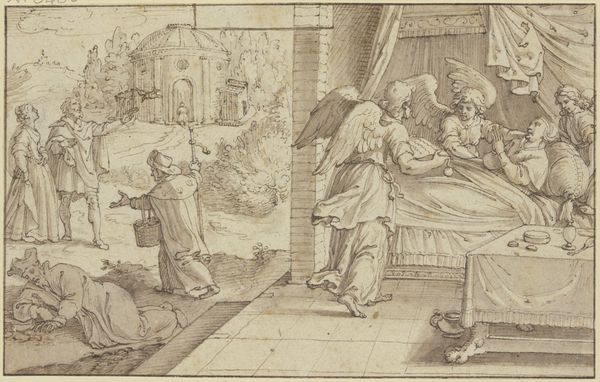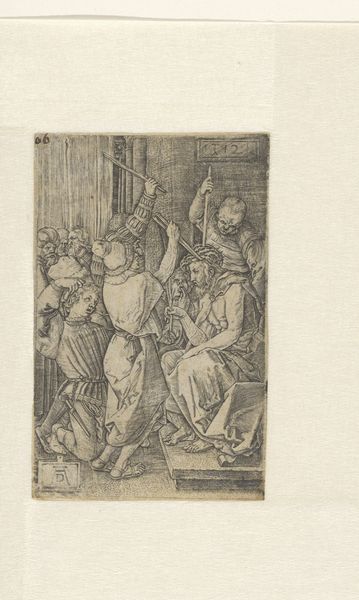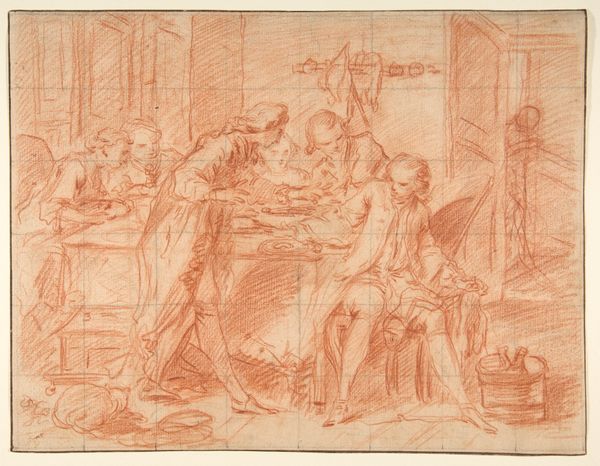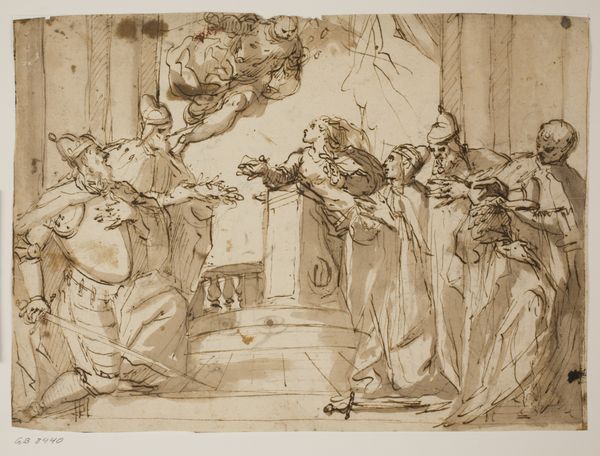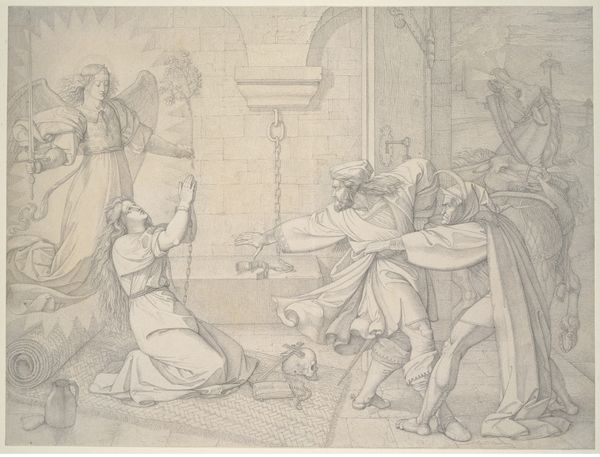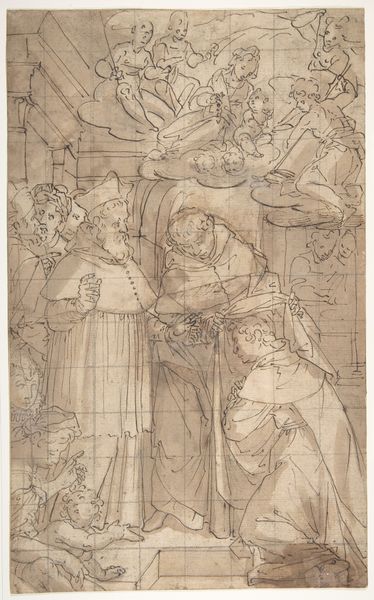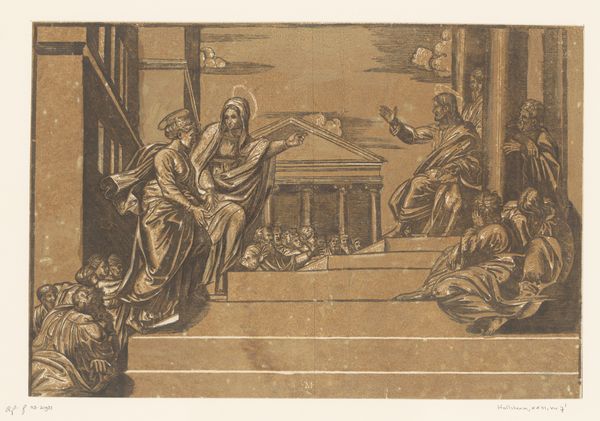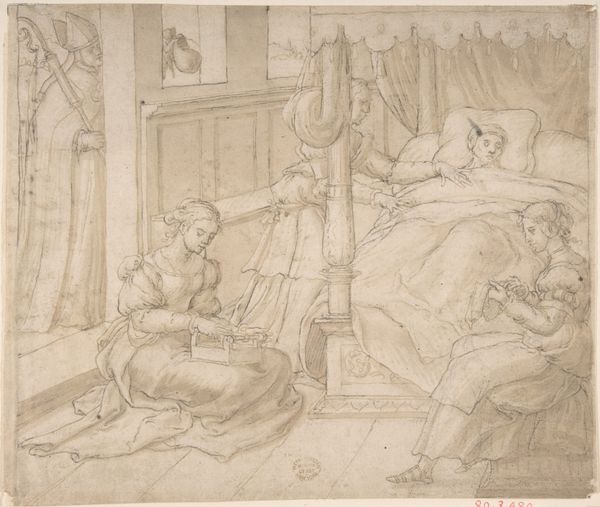
The Discovery of the True Cross 1568 - 1625
0:00
0:00
drawing, print, ink
#
drawing
# print
#
figuration
#
11_renaissance
#
ink
#
history-painting
#
italian-renaissance
Dimensions: sheet: 6 1/2 x 8 7/16 in. (16.5 x 21.4 cm)
Copyright: Public Domain
Curator: Here we have a piece attributed to Moncalvo, also known as Guglielmo Caccia, titled "The Discovery of the True Cross," created sometime between 1568 and 1625. It’s a drawing and print made with ink. Editor: The immediate impression is one of stark contrast – figures bathed in soft light are juxtaposed with areas defined by angular hatching. It feels unfinished, almost dreamlike. Curator: Indeed, the use of line is quite remarkable. Notice how Moncalvo uses varied line weights to create depth and suggest volume, a very characteristic Mannerist approach. He employs a sophisticated understanding of *chiaroscuro* within the medium of ink. Editor: And how the narrative plays into the social function of art during the late Renaissance! The depiction of the True Cross's discovery clearly served to reinforce the Church's authority and the veneration of relics during a time of religious upheaval, especially during and after the Council of Trent. Curator: Precisely! It embodies a post-Tridentine sentiment. We see that demonstrated through the very composition – figures are arranged with careful attention to expressing clarity, promoting piety through accessible, relatable scenes. Editor: Accessible maybe for a specific segment of the population, though, right? Art became such an instrumental device within the Counter-Reformation efforts to visibly mark the cultural landscape of Europe. Its propagandistic roles make me wonder, what exactly does the choice of ink do here? Was it the practicality of reproducibility for widespread dissemination or, did it offer a sense of humility befitting of the subject matter? Curator: An excellent point. I find it hard to disassociate my interpretation from its aesthetic. Consider, for instance, the dynamic interplay between the architectural elements in the background and the contorted figures in the foreground, there's tension. It seems Caccia's trying to wrestle clarity out of chaos. Editor: And clarity, I imagine, became a powerful force during the Reformation. The symbolism within history paintings often transcended mere artistic expression; they served as visual rhetoric designed to persuade and control popular religious sentiment during that era. Curator: That resonates deeply when thinking about the artistic choices Caccia deploys in his mark making; I see those decisions through the framework of the composition, perspective, line, tone, and how effectively all these come together in the staging this important historical moment. Editor: And I am left contemplating this moment, considering the way that images worked—and continue to work—to shape collective memory and moral judgment. Thank you, Guglielmo Caccia!
Comments
No comments
Be the first to comment and join the conversation on the ultimate creative platform.
